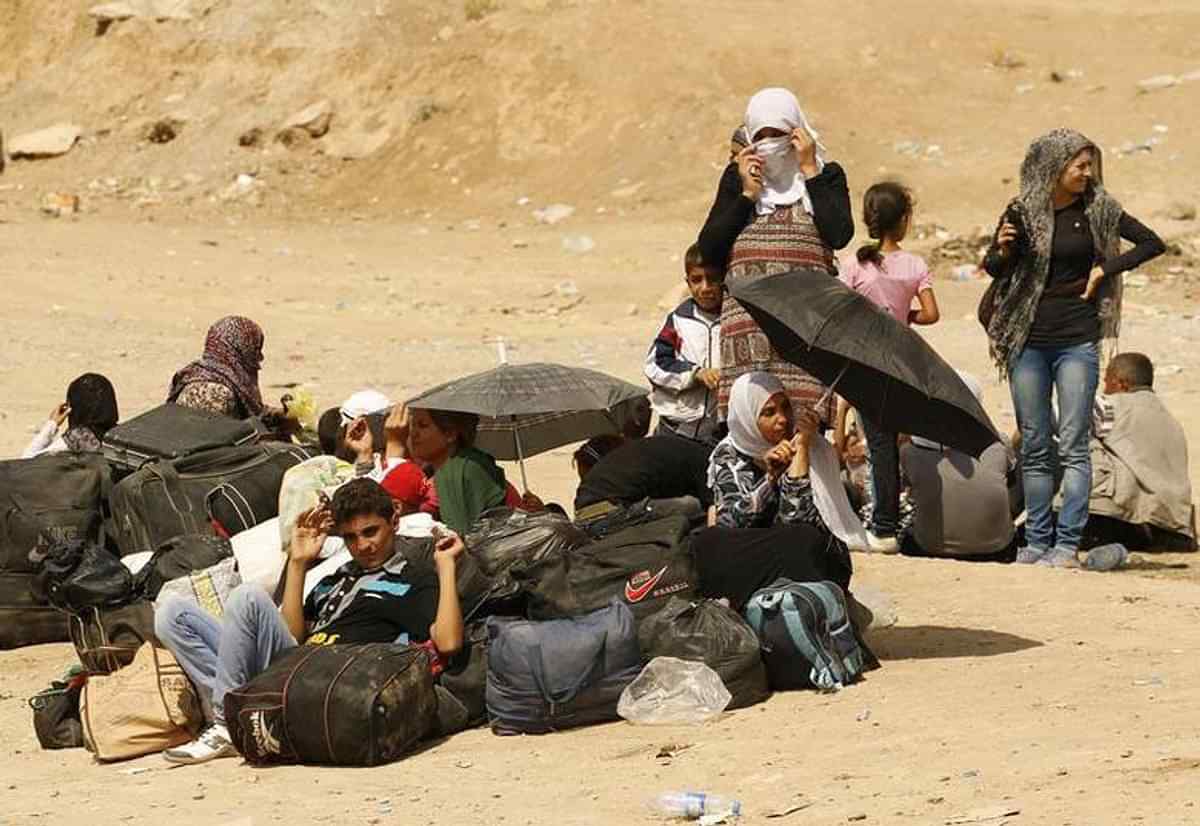The total number of refugees in the world is growing

A few minutes every morning is all you need.
Stay up to date on the world's Headlines and Human Stories. It's fun, it's factual, it's fluff-free.
A refugee is a person who has been displaced from their home country and has had to settle in another country, often a neighboring one.
- Stories about civil wars and other global conflicts often discuss the plight of refugees who have been displaced due to fighting.
- When war breaks out, as it has in Syria for the last 10 years, innocent bystanders can be forced to abandon their homes, even their country.
- When that happens, other countries often see the direct consequences of those wars in the form of refugees arriving at their borders.
- When this happens, it’s often called a “refugee crisis.” There are many of these crises taking place around the world at the same time, including the current one at the United States border.
- But calling something a “refugee crisis” doesn’t clearly explain the entire situation.
- To appreciate how dire such crises can be, it’s important to put the numbers in perspective.
How many refugees are there?
- Both the United Nations and Amnesty International have put the number of total refugees around the world at approximately 26 million.
- Half of these 26 million refugees are children under the age of 18.
- That number has been growing steadily over the last decade and doesn’t look to be slowing down.
What is a refugee?
- A refugee is a person who has been displaced from their home country and has had to settle in another country, often a neighboring one.
- In some instances, refugees may be referred to as “displaced people,” which is a broader term used to refer to different groups.
- The United Nations High Commissioner for Refugees (UNHCR) says there are 80 million displaced people in the world.
- 26.3 million of those 80 million are refugees (people displaced from their country) while 45.7 million are “internally” displaced, meaning they are in their home country but have been forced from their homes.
- Another 4.2 million are asylum-seekers, which means they are looking to be taken in by another country because they fear for their safety.
- The UNHCR also lists 3.7 million Venezuelans that have been displaced abroad, not because of war, but because of an economic crisis that has resulted in a lack of food and other vital resources.
- In total, 5.4 million people have left Venezuela, with 800,000 being labeled asylum-seekers and another 140,000 officially designated as refugees (as opposed to migrants).
Refugees by the numbers
- As of 2020, nearly two-thirds of all refugees come from one of five countries: Syria (6.6 million), Venezuela, Afghanistan (2.7 million), South Sudan (2.3 million) and Myanmar (one million).
- For comparison: there are more Myanmar refugees than there are residents of either South or North Dakota.
- There are nearly twice as many refugees from Myanmar than there are people living in Wyoming.
- The population of Tennessee is only slightly higher than the total number of Syrian refugees.
- In total, there are almost as many refugees in the world as there are people living in Texas.
What happens to refugees?
- Part of the reason that we often hear about a “refugee crisis” is because the countries that take in refugees are often said to be overwhelmed by the numbers.
- For instance, in 2020, there were protests in Greece over the surging number of refugees (many from Syria) who had arrived and were being held on Greek islands.
- Some protesters were angry about resources that were being used to care for refugees while Greece was in the middle of a financial crisis of its own.
- Others were protesting the inhumane conditions refugees were confined to, with some migrant centers housing as many as 10 times as many people as intended.
- A similar situation has played out at the US’ southern border, where a surge of migrants, especially children, has overwhelmed existing facilities.
- However, most of the refugees in the world aren’t arriving in the US or Europe.
- Instead, 85% of all refugees are living in developing countries (i.e., countries whose gross domestic product (GDP) averages less than US$25,000 per person).
- The countries with the largest refugee populations are Turkey (3.6+ million), Jordan (2.9 million), Colombia (1.7 million), Pakistan (1.4 million), Lebanon (1.4 million) and Uganda (1.4 million).
- The only developed country to take in more than a million refugees is Germany, which is currently home to more than 1.1 million refugees.
- (By some metrics, Turkey is considered a developed country but this isn’t universally agreed upon.)
Have a tip or story? Get in touch with our reporters at tips@themilsource.com




Comments ()